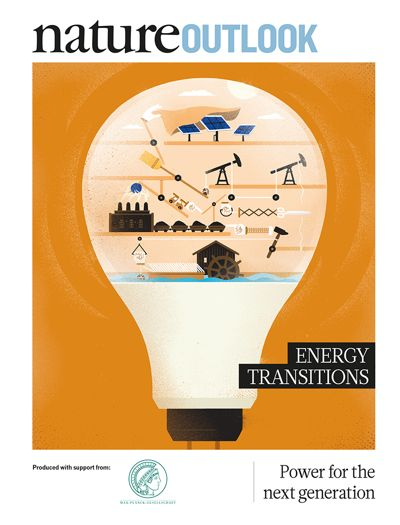For most of human history, people relied on their own muscle-power, fueled by food, while fire provided heat & light. As agriculture emerged, followed by towns & cities, human muscles & those of domesticated animals were still the main source of power. https://www.nature.com/articles/d41586-017-07506-z">https://www.nature.com/articles/...
By the 3rd century BC, people were exploiting a powerful source of energy: water. Ancient Greeks used simple water mills to drive grindstones. By the end of the 11th century, water power was being used across Western Europe to mill grain, process cloth, tan leather, & saw wood.
One mill and a handful of people could grind enough flour to feed a town, freeing others to develop a wider range of trades. The cost of producing flour and bread fell. For many, quality of life began to improve.
Windmills were first seen in seventh-century Persia. When they reached Europe in around 1150, they gave more people access to power, albeit subject to the vagaries of the weather.
As medieval Europe’s population burgeoned, traditional small-scale industries also grew, setting the scene for the first energy revolution: the switch from wood to coal.
Big changes began in England in the sixteenth century, driven largely by the needs of the country’s capital — London. The city had imported small amounts of coal from the north of England since the thirteenth century, mostly for use in lime kilns and forges
Coal& #39;s foul smell & black smoke meant that Londoners stuck to wood & charcoal for domestic use. By the sixteenth century, however, England’s forests had been over-exploited, & the transport of wood over ever longer distances to London made it expensive.
At first, only the poor burned coal, but soon the shortage of wood drove even wealthier residents to adopt it. Technological innovation, such as better designed fireplaces, flues and chimneys, led to wider adoption.
Coal wrought huge changes in society. “It reduced the pressure on land because energy could be found below ground,”. Coal made homes less expensive to heat, and brought down the price of metal goods that required heat to produce.
To meet the growing demand, coal mines sprang up in other regions of Britain. Deeper mines were prone to flooding, so steam engines were developed to power water pumps.
Canals were dug to transport coal to the cities. Both were fundamental to the Industrial Revolution that followed. “Advances in engineering, technology and culture all combined to get the Industrial Revolution started. However, it wouldn’t have taken off without coal.”
Although Britain was the first nation to make the transition to coal, it was a slow process. “It was only in the 1800s that it was used in a large way for power and transport. By 1880, coal was hugely dominant in all services.
For the industrializing world, the move to coal brought enormous benefits. More people were better off and had access to a wider range of goods. Expanding rail networks and steamships transformed trade and offered ordinary people greater mobility.
Even as coal was in the ascendancy, new sources of energy began to make their mark. Town gas (derived from coal) became available for lighting and heating in the early nineteenth century, initially in London.
Gaslights made city streets safer & changed working practices & leisure activities — including sleep patterns. Later, paraffin (kerosene) the first product of the newly exploited Pennsylvania oil fields — provided a cheaper alternative to whale oil for lighting poorer homes.
By the late nineteenth century, another type of power was poised to make its debut: electricity. Coal-fired power stations appeared in Europe and the United States in the 1880s, first for lighting and then to power trams and trains
The first half of the twentieth century saw electrification of factories, it made production systems much more flexible & more reliable. Power now came at the flip of a switch. Working conditions improved: factories were cleaner and safer, and much more productive.
Electricity transformed homes: irons, fans & water heaters appeared before 1900, later joined by cookers, fridges, washing machines & all manner of labour-saving devices. “Electricity revolutionized communications, from the telegraph & telephone to radio, the TV & the Internet
Thanks to electricity, most of us in developed countries have luxuries even the poshest houses in Victorian times didn’t have.
Oil looked as if it might play only a minor part in the energy story. That changed with the invention of the internal combustion engine and the rise of the cheap, mass-produced motor car.
Demand for petroleum soared and, as the oil industry expanded, new uses for oil were found — including generating electricity, which started to replace coal.
With time it became increasingly clear that fossil fuels resulted in undesirable deteriorating air quality, largely caused by emissions from power stations and vehicle exhausts. It is now one of the greatest public health issues
Today, there’s a fresh revolution under way, driven by the need to satisfy the ever-increasing demand for energy — particularly in developing nations — without worsening the problems created by those who industrialized first.
The nuclear industry can drastically improve electricity supply in countries where many remain doomed to energy poverty, left in the dark without the power needed to “switch on” the process of industrialization. #sthash.uOhdsBNI.dpbs">http://ansnuclearcafe.org/2016/07/21/nuclear-energy-in-the-developing-world/ #sthash.uOhdsBNI.dpbs">https://ansnuclearcafe.org/2016/07/2...
Nuclear energy will drastically improve the lives of individuals across the world. For nations in Asia, Africa, the Middle East, taking the future of the environment & common-sense economics into consideration means pursuing safe, efficient & carbon-free energy of nuclear power.

 Read on Twitter
Read on Twitter



